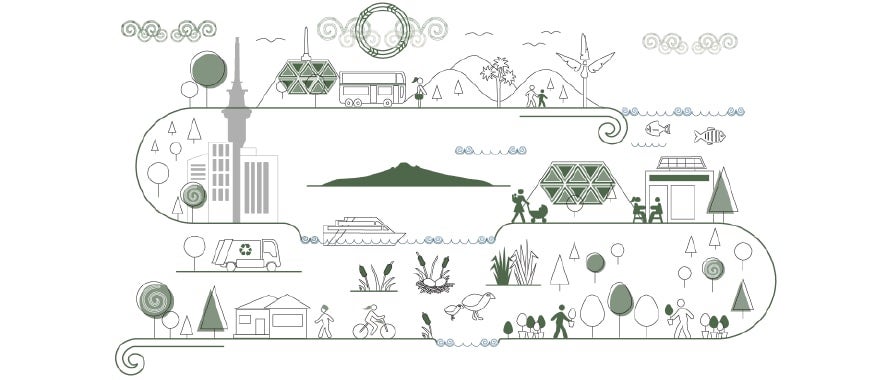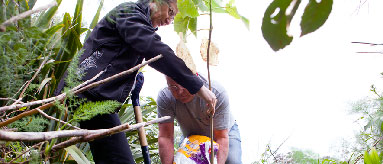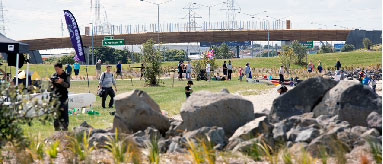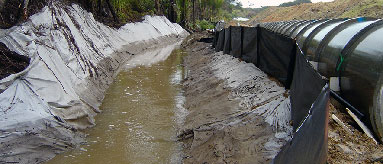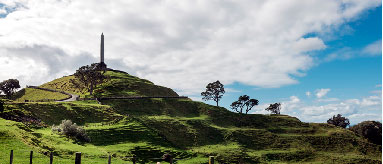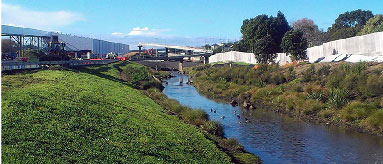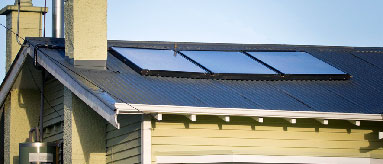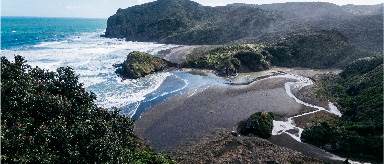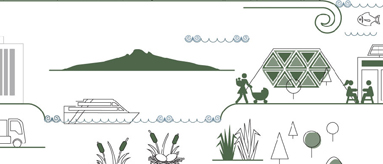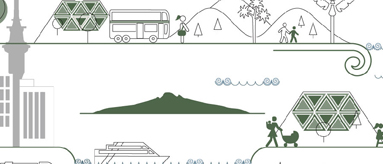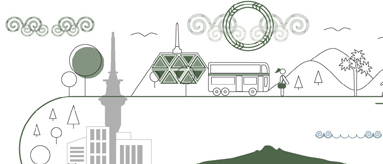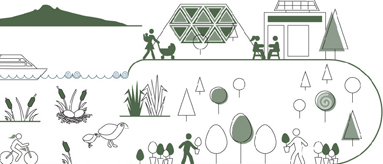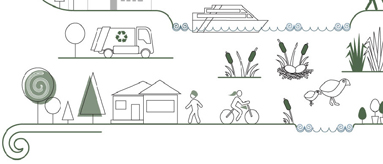The natural environment
The natural environment is the basis for our existence and prosperity.
It provides the clear air we breathe, the freshwater we drink and the soil to grow food to eat. It supports and enables all aspects of our society, economy and culture.
Our drinking water comes from important ecosystems in the Hunua and Waitākere Ranges regional parks, the Waikato River and underground aquifers.
Economic activities and sectors such as tourism, fisheries, agriculture, horticulture and emerging technologies depend on resources from our natural environment.
Our interactions with the natural environment positively affect our mental and physical health and wellbeing.
The natural environment is inextricably connected to Aucklanders' sense of identity and place. It is a fundamental part of our shared cultural heritage, providing a sense of belonging and connection between our people and communities, and their place.
Māori identity includes relationships to natural systems and landmarks. This strengthens their deep physical and spiritual connections to a place.
Auckland's natural environment not only supports its people, but it is home to many special local ecosystems. It is essential for the survival of both indigenous wildlife and species from across the world.
The Tāmaki Makaurau Auckland region consists of:
- large native forest-clad ranges, including the Hunua and Waitākere Ranges
- three significant coastal estuaries/harbours
- 28 regional parks
- Tikapa Moana / Te Moananui-a-Toi / Hauraki Gulf Marine Park
- an abundance of spectacular coastal landscapes, seascapes and beaches
- numerous freshwater lakes, rivers and streams.
These natural environments create homes and habitats for the survival of indigenous Native to the country. wildlife and species. As a result, these areas are rich in indigenous biodiversity Biodiversity is short for biological diversity. It describes the variability among living organisms, and the ecological complexes of which they are a part, including diversity within species, between species, and of ecosystems. Indigenous biodiversity includes individual birds, plants, fish, insects and other species that are specific and/or native to New Zealand. There are many examples, such as kiwi, tui, inanga (whitebait), weta, and ti kouka (cabbage tree)..
For example, the Kaipara Harbour, the Firth of Thames and the Manukau Harbour provide feeding and breeding grounds for many coastal and migratory birds. These include threatened species such as the wrybill, bar-tailed godwit and New Zealand dotterel.
Some native species are not found outside New Zealand and are under threat of extinction, such as:
- birds on islands in the Hauraki Gulf
- kauri in the Waitākere and Hunua forests
- unique species in our marine and freshwater environment Beds, banks, margins, flood plains and waters of rivers and natural lakes and wetlands, and groundwater systems together with their natural functioning and interconnections..
Twelve of the 59 different types of New Zealand's indigenous forest ecosystems are found in Auckland. Harataonga Bay, Aotea / Great Barrier Island has Auckland's most diverse forested area.
We have a responsibility to ensure our treasured natural areas and our natural environment are protected and cared for. This maintains their intrinsic values Values of the environment and cultural heritage in their own right, as distinct from the benefits people obtain from them. and relational values Preferences, principles and virtues that are associated with meaningful relationships between humans and nature, and among humans. For example: kinship and stewardship values, care and responsibility values, indigenous and spiritual values. and ensures they can sustain life for future generations.
Our cultural heritage
The natural environment is part of Auckland's shared cultural heritage.
This term is often used to describe that which we have inherited from past generations and are looking after for the benefit of future generations.
In this plan, the term is used to mean our collective heritage of:
- air, land, and water
- biodiversity The natural environment and encompasses native plants and animals (flora and fauna), ecology, natural heritage, ecological restoration and revegetation, landforms, geology.
- significant landscapes Landscapes that are considered to be important for environmental, ecological or cultural reasons, for example the Āwhitu Peninsula, the Ōtuataua stone fields and the Franklin volcanic fields.
- historic features.
The environment and our shared cultural heritage provide an anchor for the sense of belonging that communities have to their place. These connections are addressed in the Belonging and participation outcome.
The quality of the natural environment means that Auckland has always been a desirable place to be.
It has allowed people to survive and thrive, and it has given rise to other aspects of cultural heritage. This includes storytelling, art, and knowledge, as well as the strong connection to sites, landscapes and structures of significance.
Auckland’s built heritage is, for example, an important connection for some Aucklanders. This link and the specific role of built heritage in shaping our homes, places and spaces is explored in the Homes and places outcome.
The natural environment and our shared cultural heritage have enticed people to invest in Auckland over hundreds of years. They continue to attract migrants and are one reason why so many people call Auckland home.

